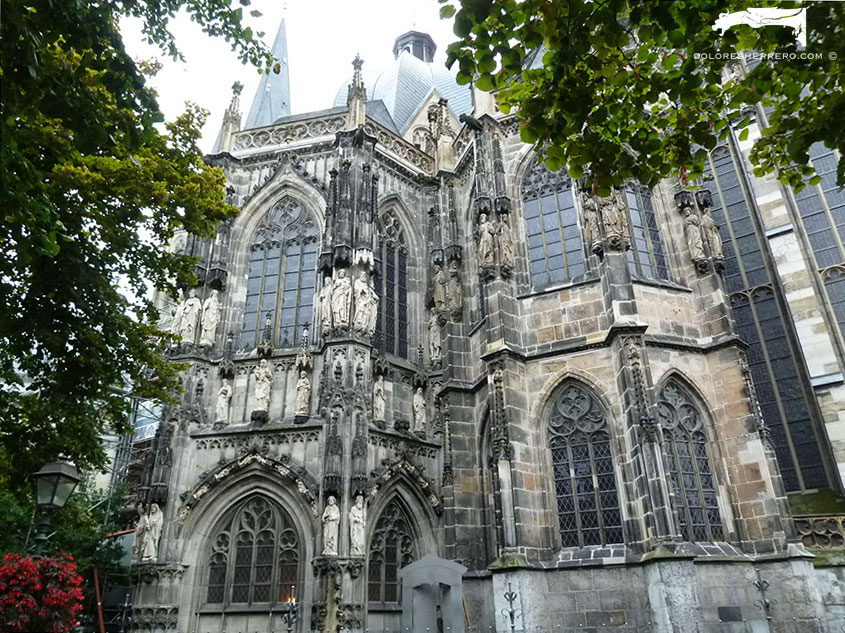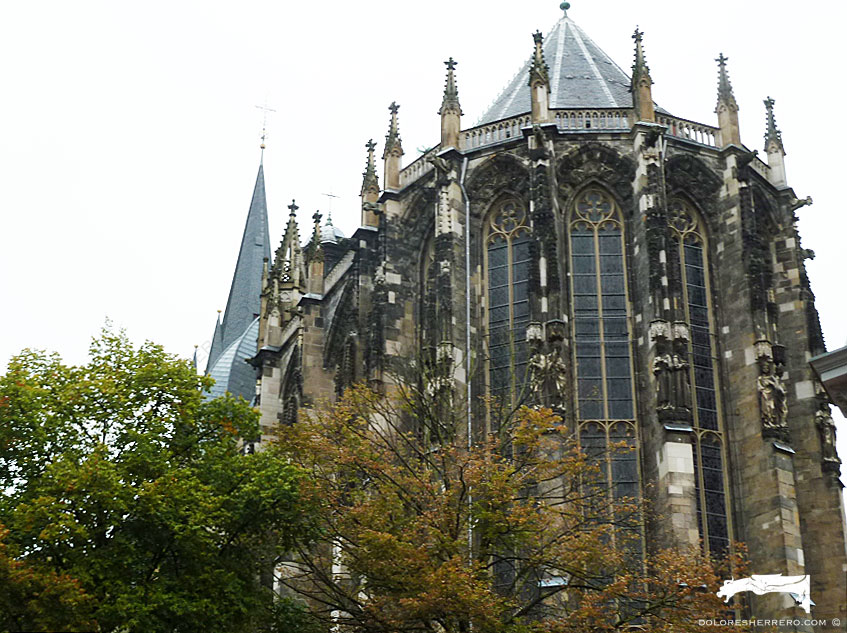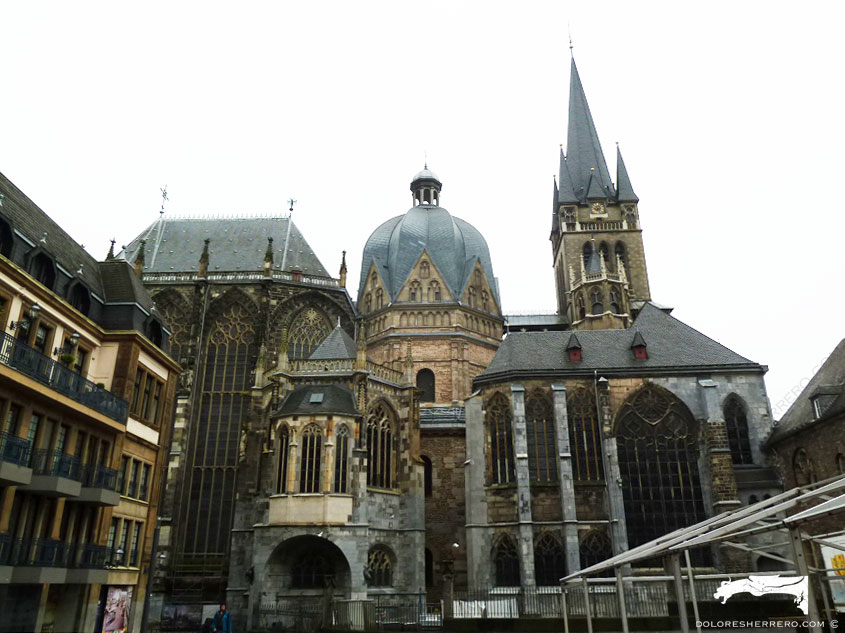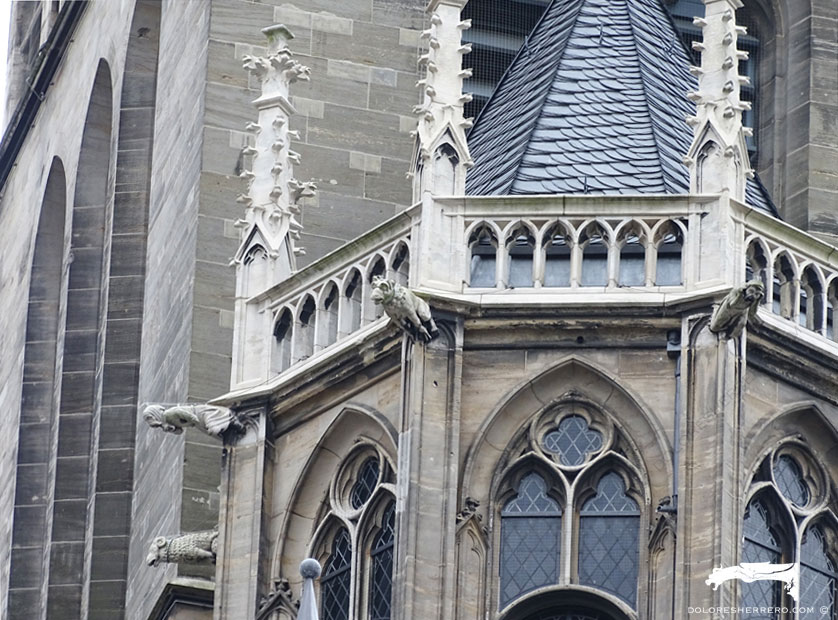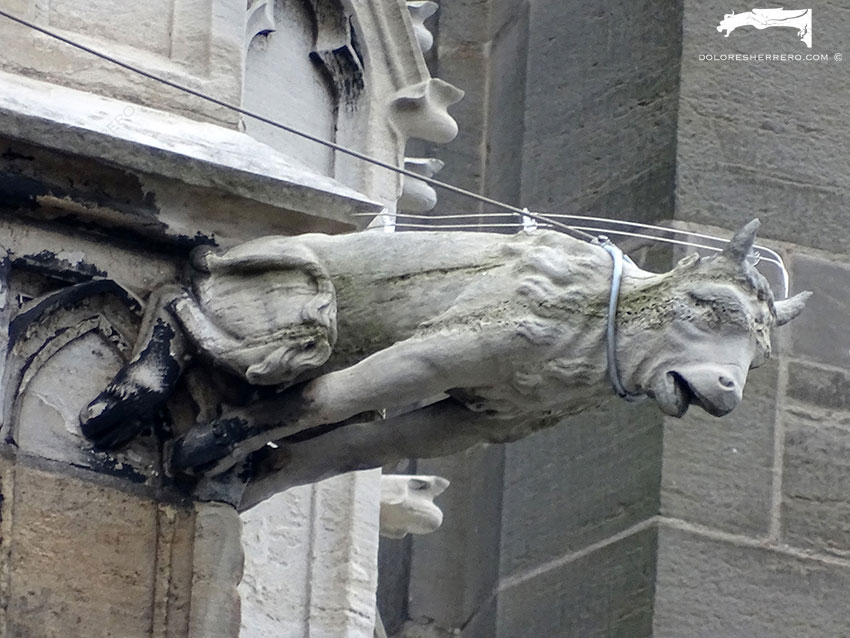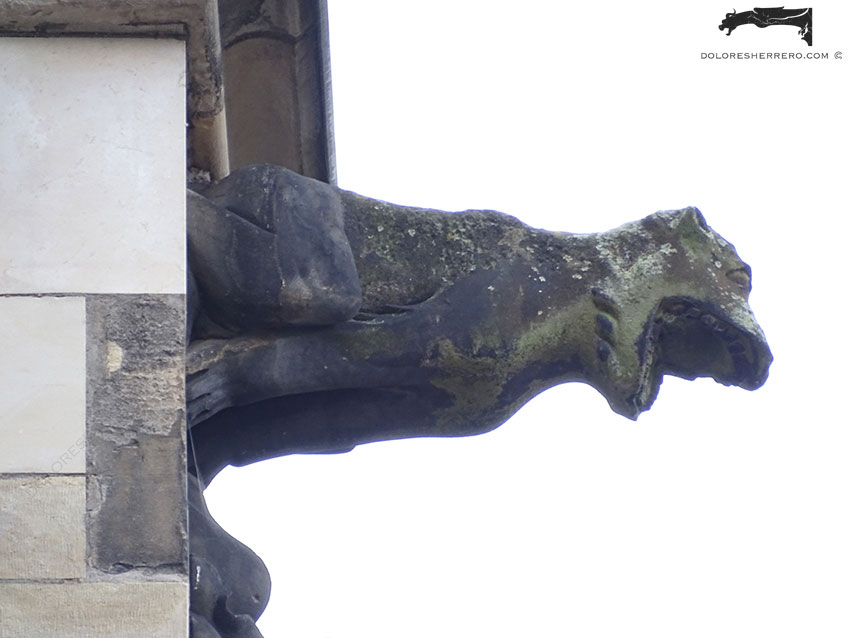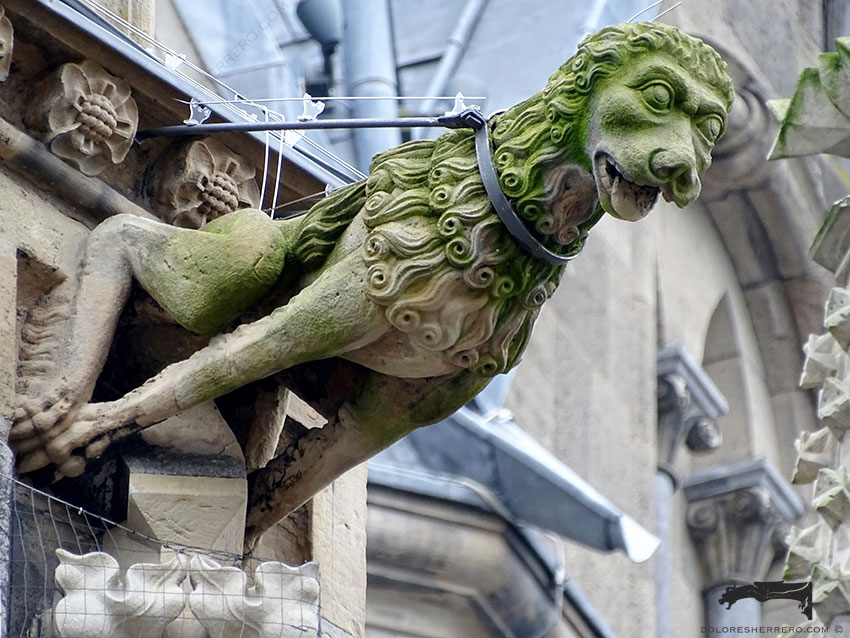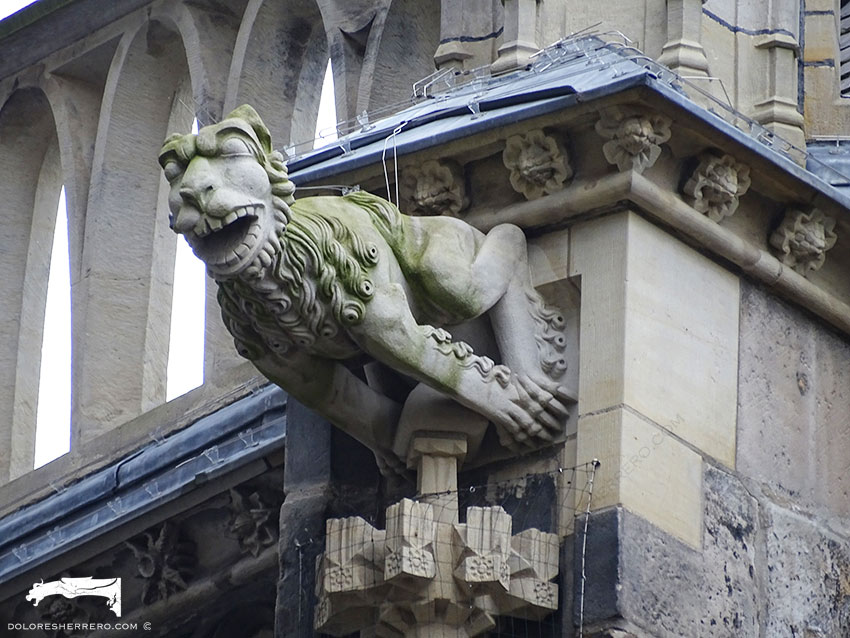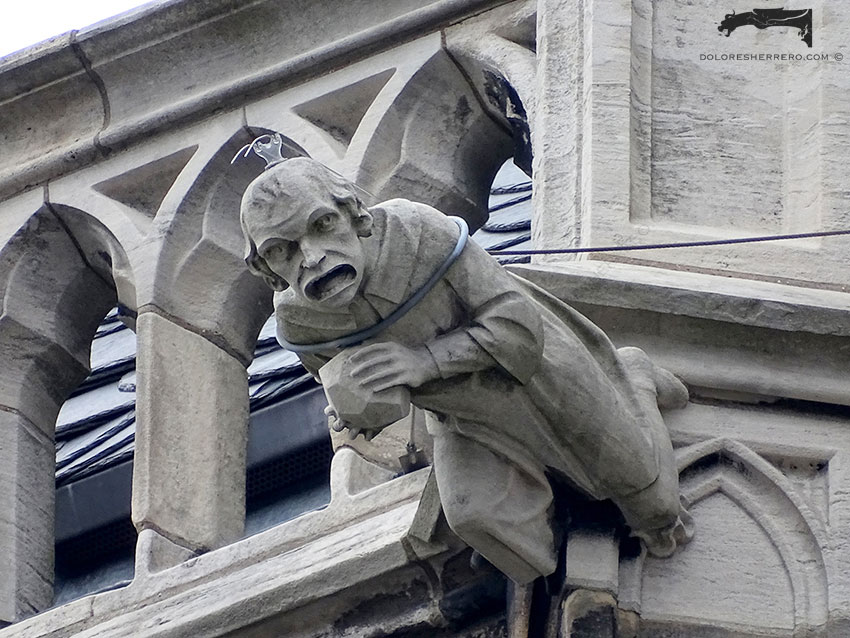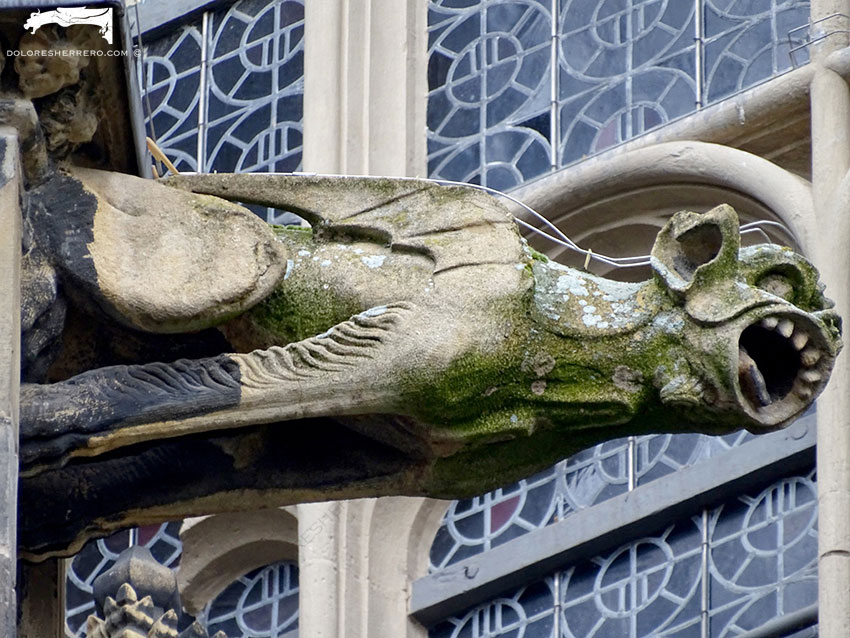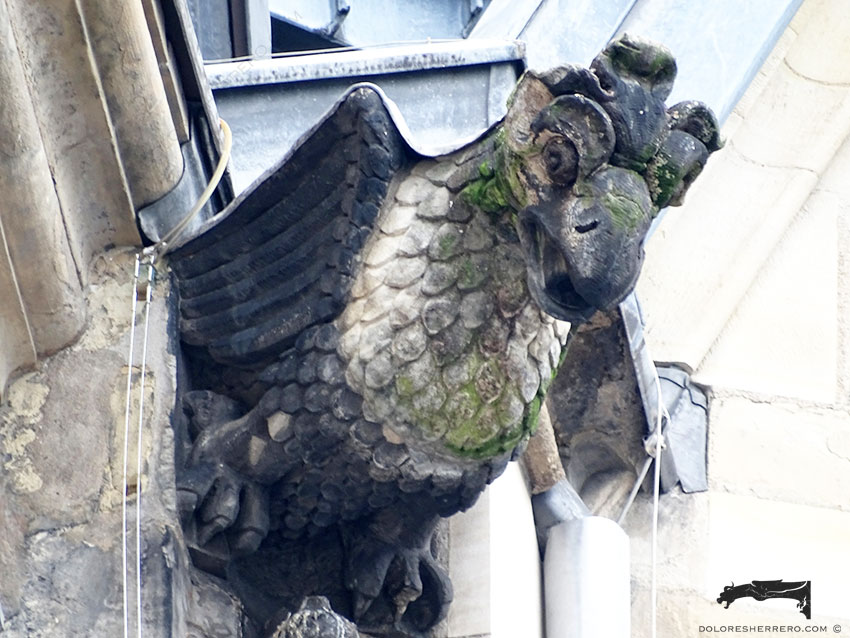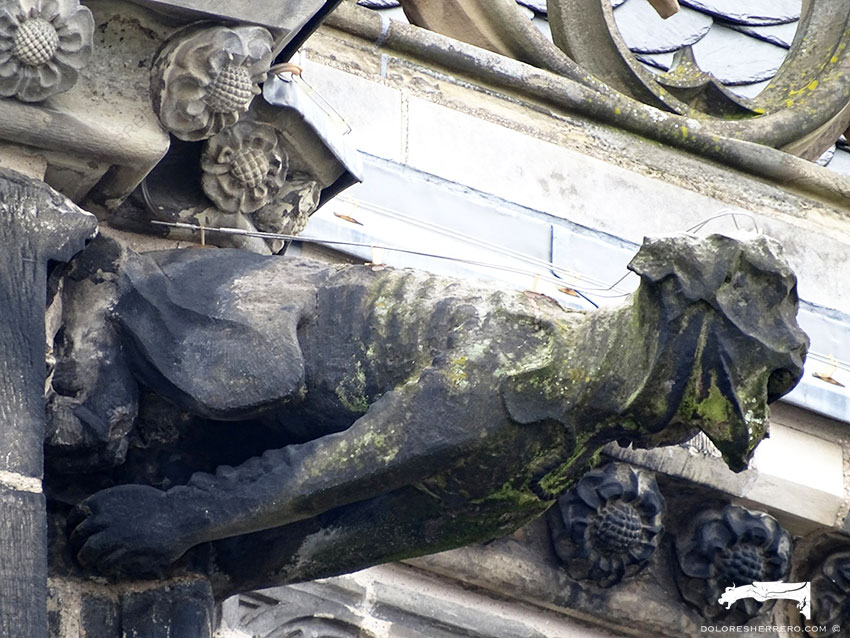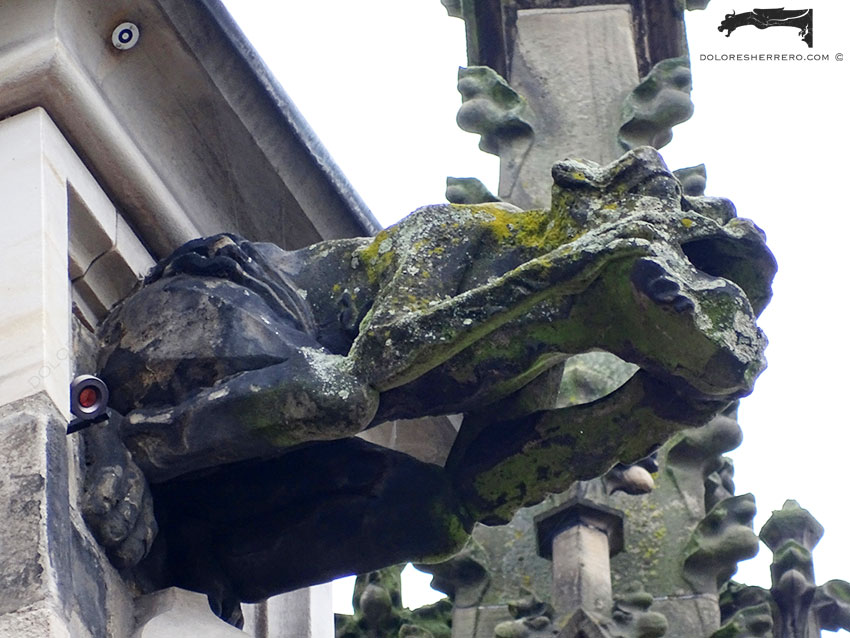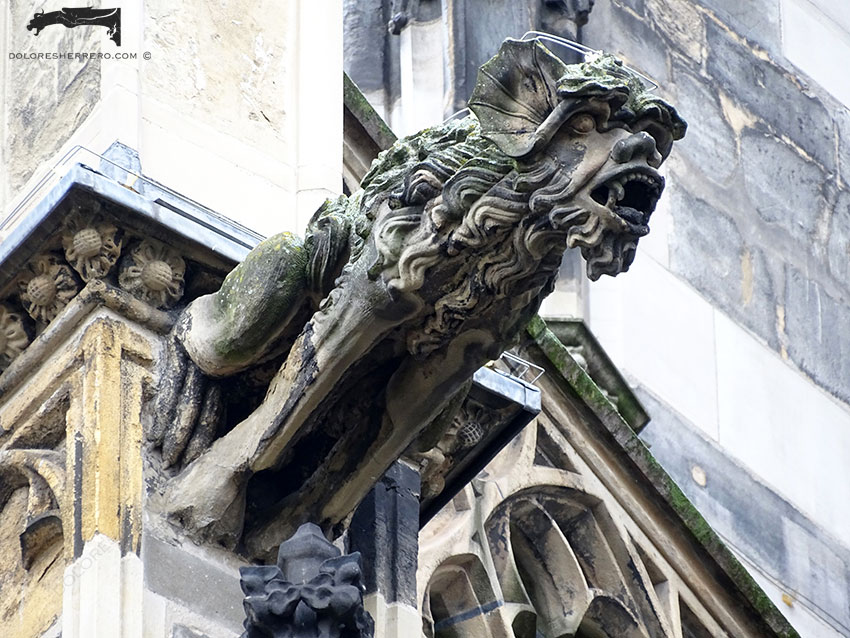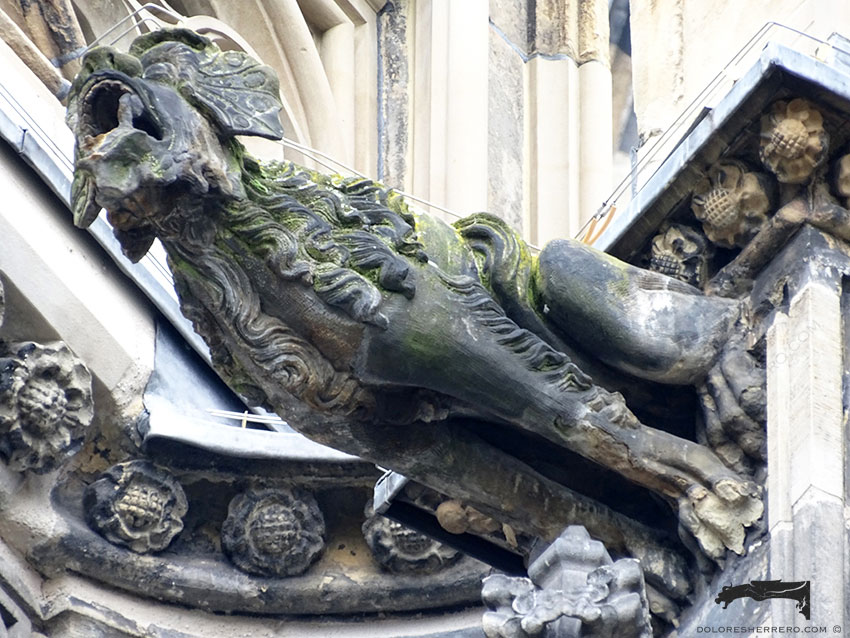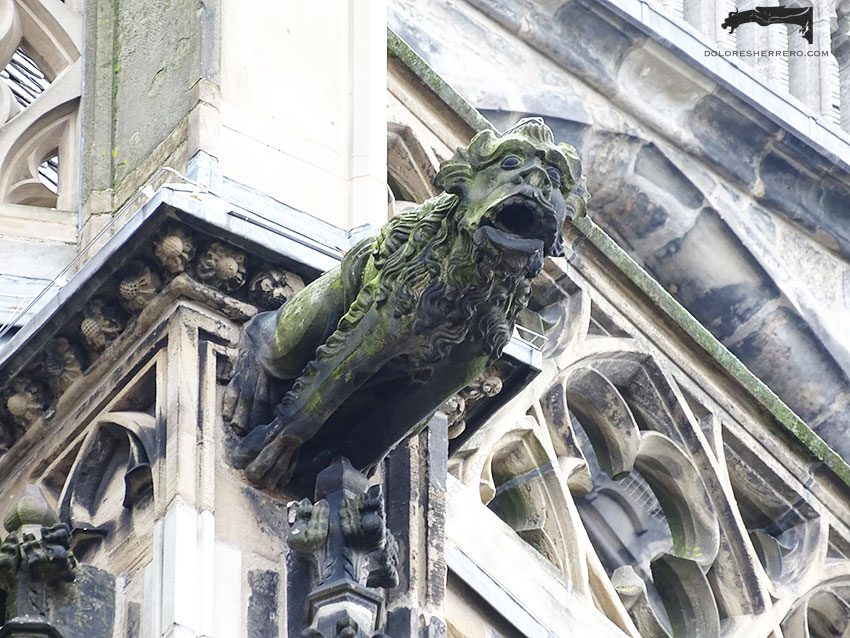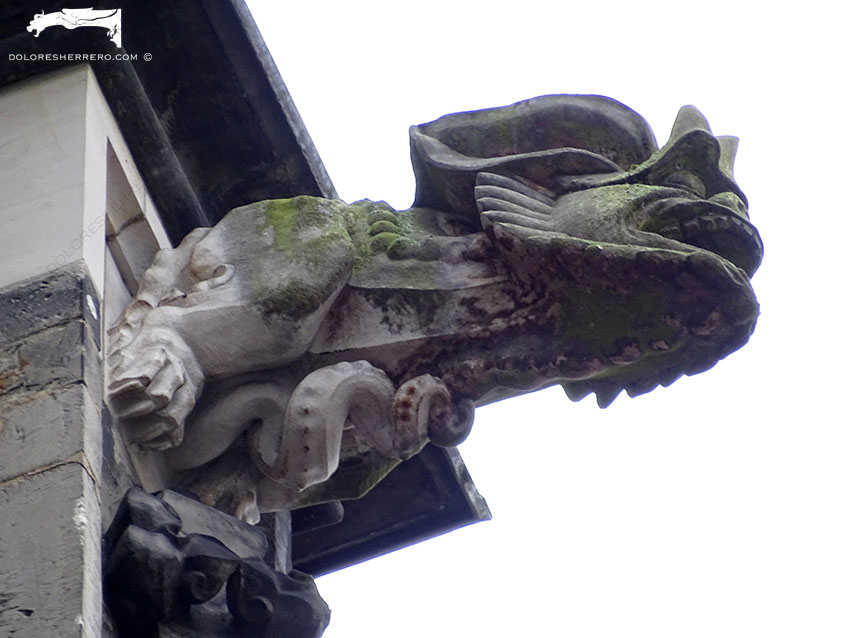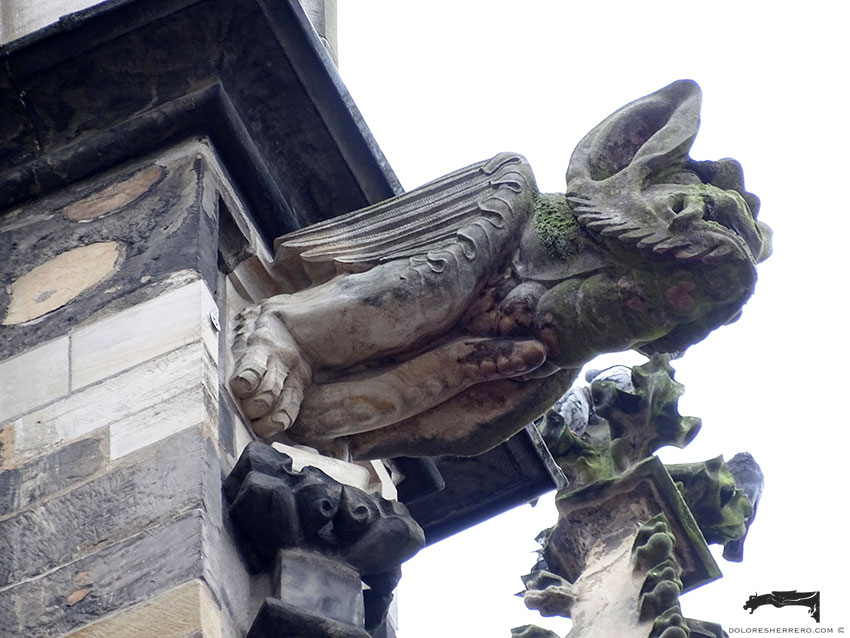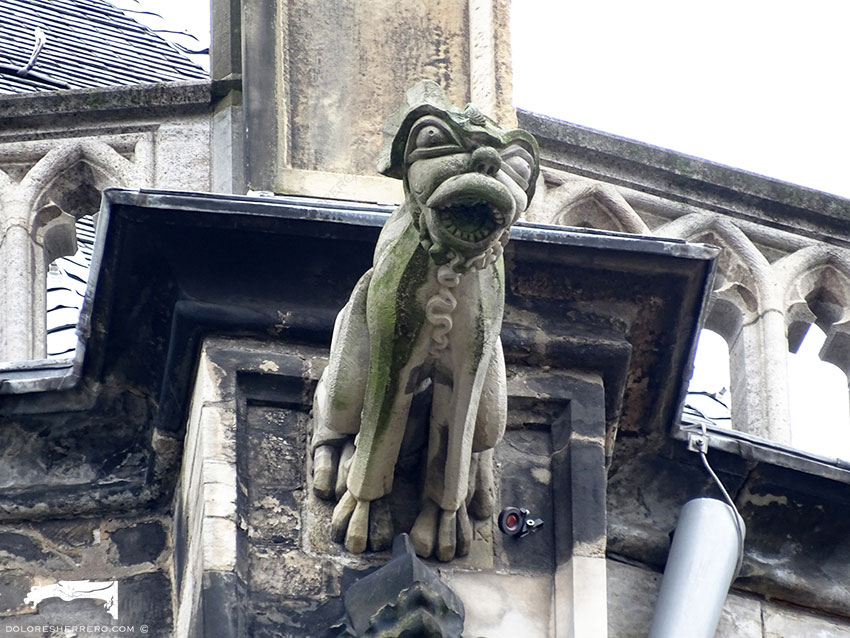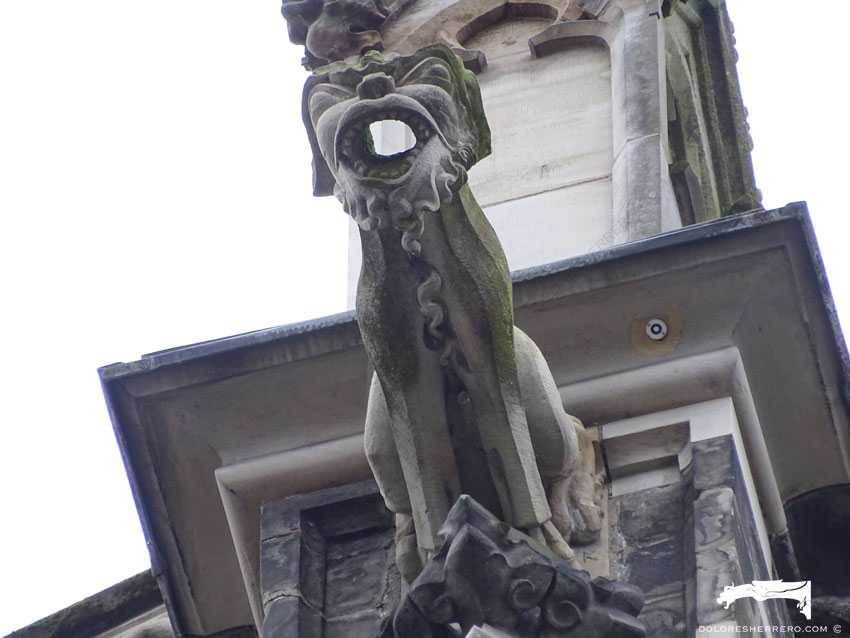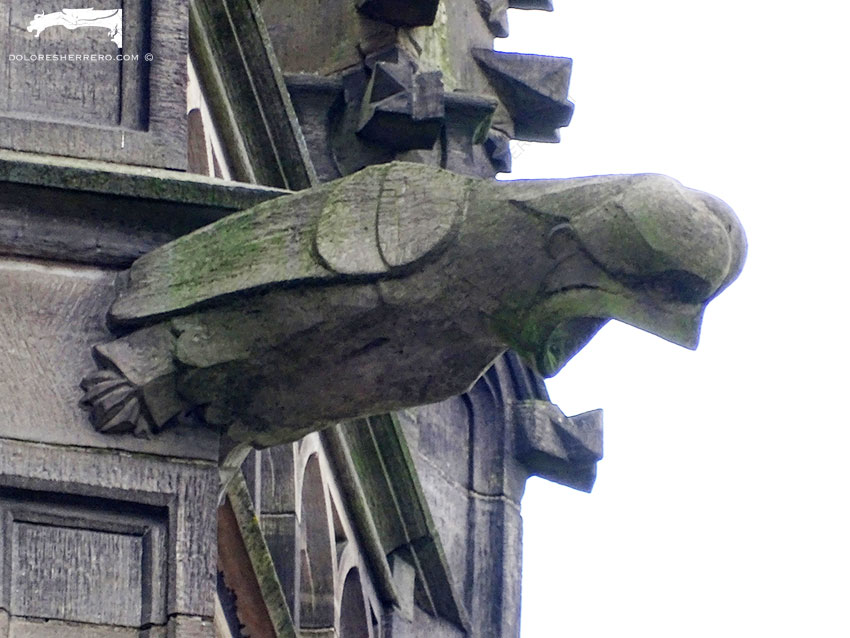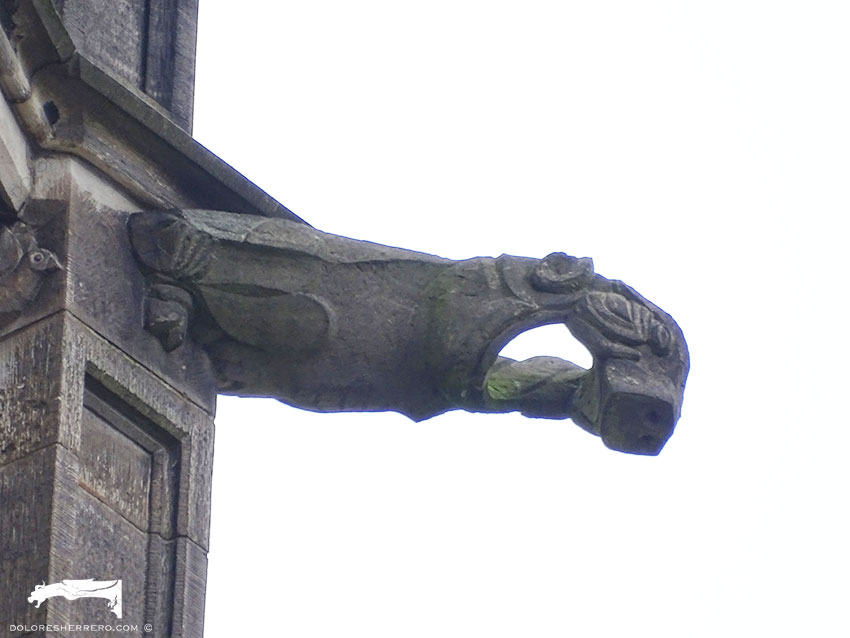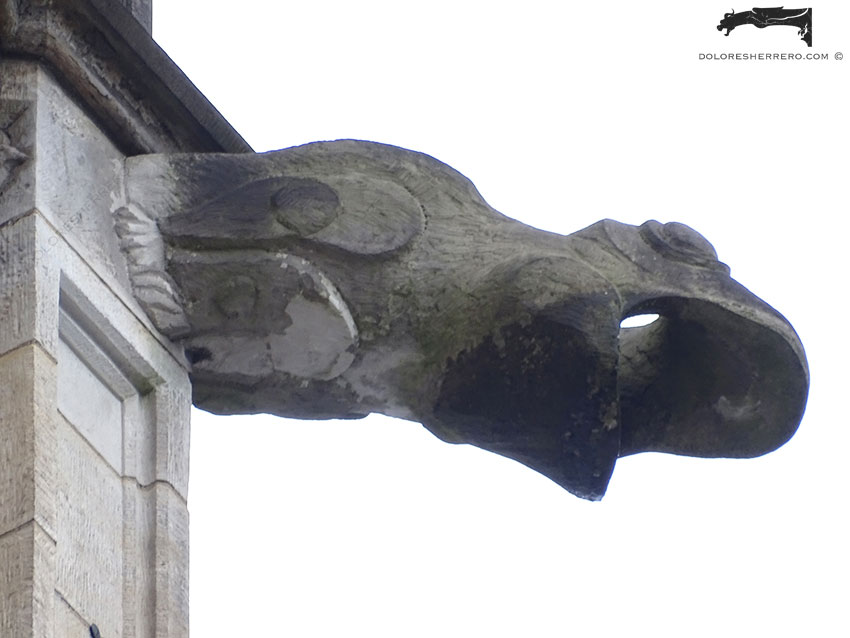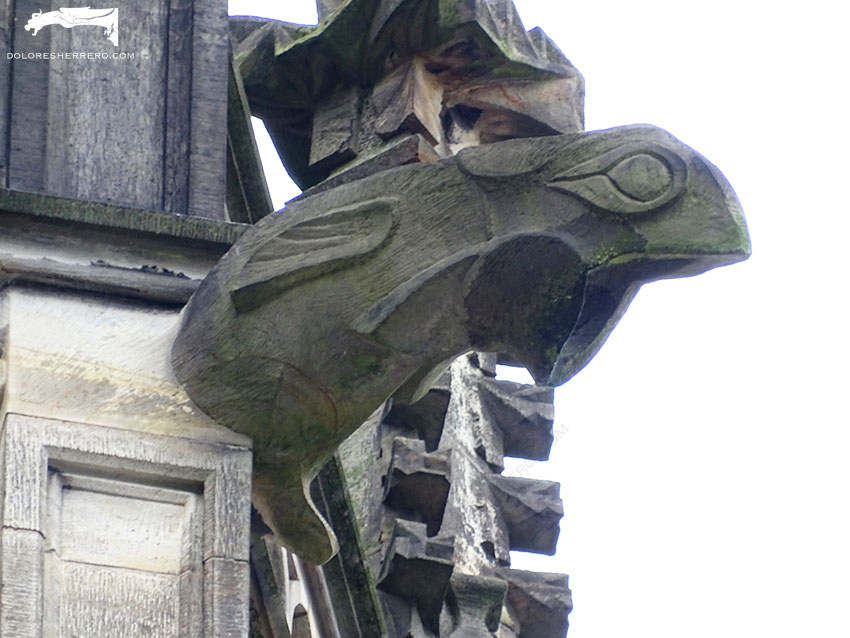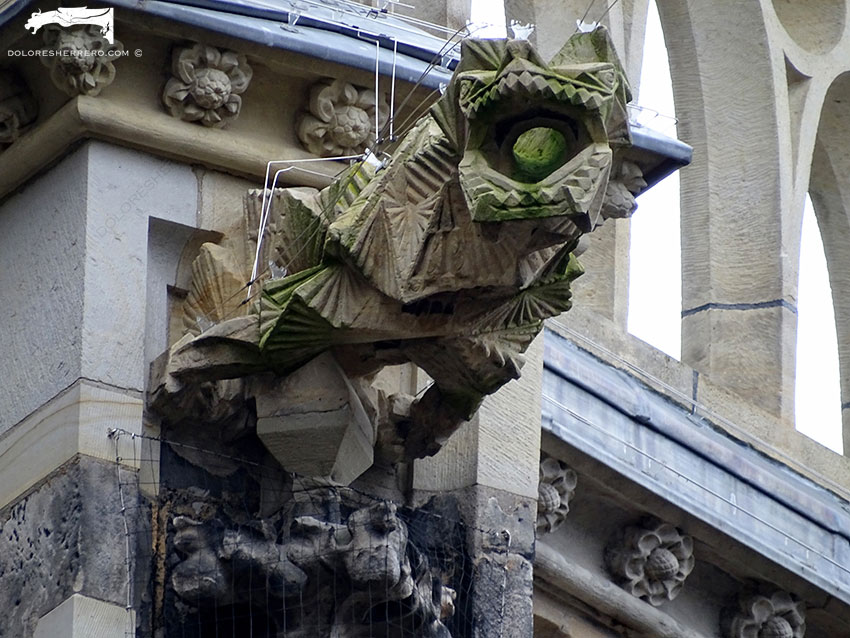Today’s entry is dedicated to the gargoyles of Aachen, a German city with one of the most beautiful and extraordinary monuments in the world: the Cathedral and its magnificent Palatine Chapel, a marvel of history and art.
Construction of the chapel began in the late 8th century. Considered the oldest chapel in northern Europe, it was founded by Charlemagne and symbolised the power of the Carolingian Empire. The chapel was later expanded over the years until becoming the splendid cathedral it is today, designated a World Heritage site in 1978 and one of the first twelve sites to be included in the UNESCO list.
Gargoyles
The cathedral’s impressive gargoyles come in a variety of amazing shapes and types, and are more than worthy of our admiration. Due to their stylistic and formal singularity, which renders them unique and surprising, we’re going to look at them according to style rather than type.
Let’s start with various gargoyles in a realistic and more classical style as regards harmonious and proportionate forms. This group includes real animals, the first of which has the horns of a bull or cow. Bulls are famous for their strength and valour. However, on the negative side, in some medieval manuscripts the bull was considered a symbol of Satan, while the cow was a symbol of stupidity and, as Hugh of Saint Victor (12th century) noted, abject passions. Don’t forget though that the Egyptian goddess Hathor was also depicted with the horns of a cow.
Another of the animals is a ram. Cesare Ripa (16th century) said that the ancients painted Venus riding a ram to symbolise lechery, thereby “indicating the subjection of reason to the senses and illicit lust”. Interestingly, in my post on the dragon, I mentioned a silver plaque from Gundestrup (1st century BC) depicting the ram-horned serpent that frequently accompanied the Celtic god Cernunnos. Again, in Egypt, the god Amun was shown with a ram’s head.
The next animals are the dog and the lion, whose symbolism is explained in their respective posts. According to Pliny (1st century), our beloved dog is “man’s most faithful animal”, while Mariño Ferro notes that in one of Aesop’s fables, Prometheus is said to have armed the proud lion “with jaws full of teeth and feet furnished with claws, and made him the strongest of all animals”.
Now let’s look at two of the human figures. The first of these is a singular and very iconographically interesting gargoyle: a man with one knee resting on the ground, long robes —he could be a priest— and an eloquent, disturbing expression (he seems to be screaming or howling), who is holding a polyhedron in his hands. The second is a doccione figure, a superbly sculpted gargoyle of exceptional beauty. It depicts a seated man with a long beard, who is wearing a floor-length hooded robe and is balancing a vase or vessel on his right shoulder.
A supremely terrifying devil completes this group of gargoyles. It has bat-like wings, a quadruped body and a large mouth with teeth and an outstretched tongue. Its eerie eyes and ferocious expression render it a spine-chilling gargoyle of great sculptural beauty.
- Catedral de Aquisgrán (Alemania)
- Catedral de Aquisgrán (Alemania)
- Catedral de Aquisgrán (Alemania)
- Catedral de Aquisgrán (Alemania)
- Catedral de Aquisgrán (Alemania)
- Catedral de Aquisgrán (Alemania)
- Catedral de Aquisgrán (Alemania)
- Catedral de Aquisgrán (Alemania)
Another group of gargoyles possesses a more original and peculiar style, with some very characteristic, more ornamental elements in their features: leaf-shaped ears, eyes with pupils, wavy or tightly curled hair and broad, expressive faces. The most striking feature of the figures is their level of detail.
This group includes an eagle with a huge leaf-shaped crest, large eyebrows and eyes with pupils. We looked at the symbolism of the eagle in an earlier post on this, the marvellous king of birds, invincible among its kind and therefore a symbol of victory, as Mariño Ferro observes in his research.
There is also a devil with leaf-shaped ears, a quadruped body, prominent ribs and a very original head that seems to be covered by a veil that ends in short medieval cape, as well as a man with a broad face who is tugging at the sides of his mouth, a gesture with various meanings, including anger, despair or humour.
Lastly, there are some exceptional and unique gargoyles in the form of several lions with wavy or tightly curled manes and ears in the shape of different leaves.
- Catedral de Aquisgrán (Alemania)
- Catedral de Aquisgrán (Alemania)
- Catedral de Aquisgrán (Alemania)
- Catedral de Aquisgrán (Alemania)
- Catedral de Aquisgrán (Alemania)
- Catedral de Aquisgrán (Alemania)
Let’s turn next to some devils with a grotesque and very imaginative appearance. Their features —eyebrows, eyes, mouths with teeth or fangs, beards and ears— are all enormous, especially the ears. They generally have serpent-like tails, very prominent windpipes, decorated wings and dragonish or reptilian necks. Similarly fantastic gargoyles can also be seen —and appreciated close up— in an area of the cathedral exterior adapted to function as a small museum.
- Catedral de Aquisgrán (Alemania)
- Catedral de Aquisgrán (Alemania)
- Catedral de Aquisgrán (Alemania)
- Catedral de Aquisgrán (Alemania)
- Catedral de Aquisgrán (Alemania)
- Catedral de Aquisgrán (Alemania)
- Catedral de Aquisgrán (Alemania)
- Catedral de Aquisgrán (Alemania)
There is another group of gargoyles sculpted in a different style, which includes a lion, a dog and two devils (one of them with a leg on its neck and displaying its genitals). Their forms are geometric and more schematic, especially the legs. Their ears and facial features are huge and they have contoured eyes with pupils, but perhaps the most striking feature is their broad faces with very wide-set eyes. These are simple but at the same time very original figures.
- Catedral de Aquisgrán (Alemania)
- Catedral de Aquisgrán (Alemania)
- Catedral de Aquisgrán (Alemania)
- Catedral de Aquisgrán (Alemania)
Yet another completely different group of gargoyles includes several real animals (a bird, wild boar, frog and rabbit). Since it is considered libidinous and fecund, the rabbit symbolises lust, as do the frog and the wild boar. This group also contains a very strange and unusual, almost alien figure. These gargoyles exhibit plain, precise forms.
- Catedral de Aquisgrán (Alemania)
- Catedral de Aquisgrán (Alemania)
- Catedral de Aquisgrán (Alemania)
- Catedral de Aquisgrán (Alemania)

To conclude, we are going to end with two amazing and spectacular gargoyles. They’re both superbly sculpted fantastical creatures whose geometrical shapes seem almost modern —even Cubist.
- Catedral de Aquisgrán (Alemania)
- Catedral de Aquisgrán (Alemania)
These fabulous, imaginative, expressive, modern gargoyles are a magnificent testimony to the infinite creativity and skill of the sculptors who produced them. Aachen Cathedral has a superb and stunning collection of gargoyles in a variety of fascinating styles.
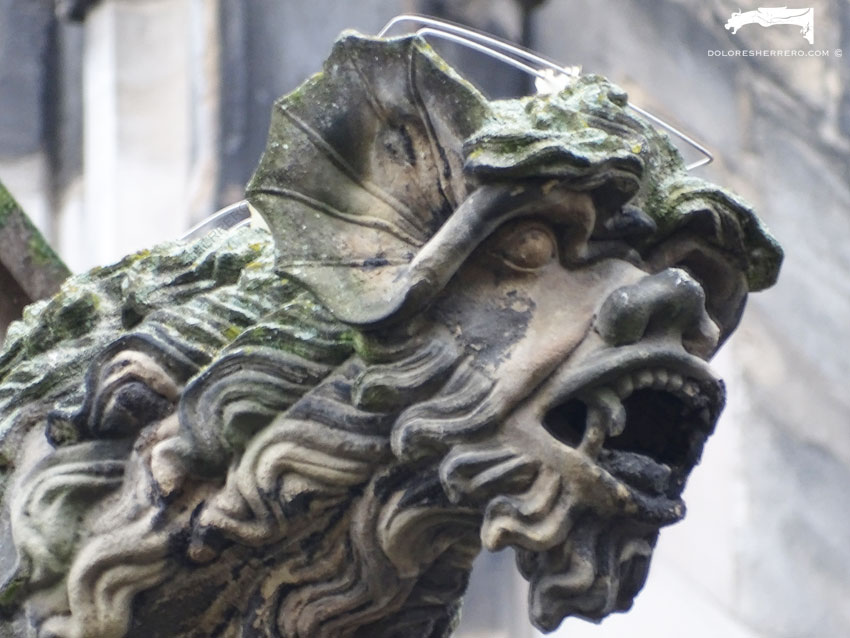
Bibliography consulted
DELACAMPAGNE, A. y C., Animales extraños y fabulosos. Un bestiario fantástico en el arte, Madrid, Editorial Casariego, 2005.
MARIÑO FERRO, X. R., El simbolismo animal. Creencias y significados en la cultura occidental, Madrid, Ediciones Encuentro, 1996.

Doctor of Art History and researcher specializing in the study of gargoyles.
I am Dolores Herrero Ferrio, and my thesis, “An Approach to the Study of Gargoyles of Gothic Cathedrals in Castilla and León”, is dedicated to the study of these fascinating figures.
If you like gargoyles and art history, you will also enjoy my book, “The Gargoyle and Its Iconography,” a book I have written with great care for those interested in the world of gargoyles.
I have created my own Encyclopedia of Gargoyles, a Gargopedia to share with you, where you will discover all the secrets and wonders of these enigmatic sculptures.
I hope you enjoy this Gargopedia as much as I have enjoyed creating it, and remember that each gargoyle has a story to tell, and here you will discover them all.
